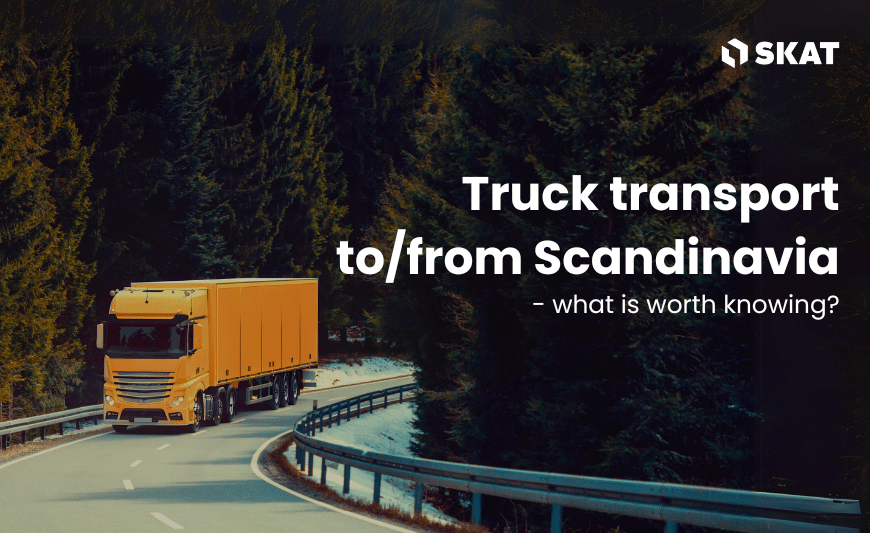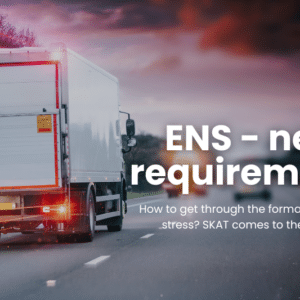International transport is a key sector of the European economy, and Scandinavia represents one of the most important destinations for Polish and European transport companies. The Scandinavian market, including Norway, Sweden, Denmark, Finland, and Iceland, is characterized by specific conditions that require proper preparation and knowledge of local regulations. In this article, we present the most important information regarding heavy goods transport to and from Scandinavian countries.
Characteristics of the Scandinavian Market
Scandinavian countries are among the wealthiest in Europe, which translates into high standards for transport and logistics services. Scandinavian business partners particularly value:
🔸 Punctuality of deliveries
🔸 High quality of service
🔸 Reliability
🔸 Transparency of communication
🔸 Ecological transport solutions
Trade between Scandinavian countries and the rest of Europe is intensive – main exports to these countries include food, furniture, automotive parts, electronics, and industrial products, while imports consist of natural resources, fish products, machinery, and wood industry products.
Norway
Norway is not a member of the European Union, which entails the need to complete customs formalities. Key aspects of transport to Norway:
🔸 Requirement for customs documentation (EX, T1, CMR, invoices)
🔸 Strict winter transport regulations (mandatory snow chains, special winter tires)
🔸 High road and ferry tolls
🔸 Tonnage restrictions on numerous mountain routes
Sweden
Sweden as an EU member offers easier access, but is characterized by:
🔸 Vast territory with large distances between economic centers
🔸 Rigorous regulations regarding exhaust emissions and ecology
🔸 Strict technical vehicle inspections
🔸 Advanced road toll system (using E-TOLL transponder)
Denmark
Denmark, serving as a bridge between Scandinavia and continental Europe, is distinguished by:
🔸 Strategic location as a logistics hub
🔸 Modern road infrastructure
🔸 Bridges and tunnels connecting islands (e.g., the Øresund Bridge connecting Denmark with Sweden)
🔸 High fees for bridge crossings
Finland
Finland presents carriers with challenges related to:
🔸 Extreme weather conditions in the winter season
🔸 Specific requirements regarding vehicle mass and dimensions
🔸 The necessity of planning transport considering ferry connections
🔸 Higher operational costs than in other countries in the region
Climatic Conditions
Harsh climate, especially in the northern regions of Scandinavia, poses a serious challenge for carriers:
🔸 Temperatures reaching even -30°C in winter
🔸 Heavy snowfall and icy roads
🔸 Short days in the winter season (even just a few hours of daylight)
🔸 Limited visibility and difficult driving conditions
These factors require proper preparation of both vehicles and drivers for driving in difficult conditions.
Ferry Crossings
Transport to Scandinavia often involves the use of ferry crossings:
🔸 Main ferry connections: Świnoujście-Ystad, Gdynia-Karlskrona, Gdańsk-Nynäshamn, Rostock-Gedser, Puttgarden-Rødby
🔸 Necessity to book spaces in advance, especially during peak season
🔸 Variability of schedules depending on the season and weather conditions
🔸 Additional travel costs increasing the price of freight
Legal Regulations and Technical Standards
Scandinavian countries are known for rigorous regulations:
🔸 Strict controls on drivers’ working hours
🔸 High requirements for exhaust emissions (low emission zones in larger cities) 🔸 Specific regulations for cargo securing
🔸 Restrictive norms related to the total vehicle mass and axle load
Operational Costs
Transport to Scandinavian countries involves higher costs than other European destinations:
🔸 High fuel prices in Scandinavian countries
🔸 Expensive road and bridge tolls
🔸 Significant ferry crossing costs
🔸 More expensive service and repair services
Road Toll System
Each Scandinavian country has its own road toll system:
🔸 Norway – AutoPASS
🔸 Sweden – E-TOLL system
🔸 Denmark – tolls for bridge crossings (Great Belt, Øresund)
🔸 Finland – relatively lower road tolls
Insurance
Due to the high value of transported goods and difficult transport conditions, comprehensive insurance is important:
🔸 Extended carrier liability insurance
🔸 CARGO insurance
🔸 Additional insurance for risks related to climatic conditions
🔸 Anti-theft security measures (due to the high value of cargo)
Route Planning
Proper planning is key to success in Scandinavian transport:
🔸 Taking weather conditions into account when planning travel time
🔸 Booking ferry crossings in advance
🔸 Checking tonnage restrictions on the planned route
🔸 Analysis of availability of parking spaces and rest areas along the route
Vehicle Preparation
The specifics of the Scandinavian climate require proper preparation of the fleet:
🔸 Specialized winter tires (preferably with Scandinavian homologation)
🔸 Snow chains and other winter equipment
🔸 Efficient heating system in the driver’s cabin
🔸 Additional fuel tanks (due to large distances between stations)
Documentation
Correctly prepared documentation helps avoid problems when crossing borders and during inspections:
🔸 Complete set of transport documents (CMR, loading lists)
🔸 Permits for transporting specific loads, e.g., waste (SKAT helps in obtaining appropriate permits)
🔸 Customs documents in the case of Norway
🔸 Certificates of compliance with exhaust emission standards
🔸 Documents confirming road tolls and ferry reservations
Summary
Heavy goods transport to and from Scandinavian countries, despite numerous challenges, offers attractive business opportunities for transport companies. The key to success is proper preparation for specific conditions, knowledge of local regulations, and investment in modern fleet. Companies that can meet the high Scandinavian standards can count on stable and profitable cooperation with partners from northern Europe.
Our company has many years of experience in serving Scandinavian destinations and offers comprehensive transport solutions tailored to individual customer needs. Please contact us to discuss the details of cooperation.



